Wildlife
To date, URI classes have identified over 185 plants and over 70 animals in the North Woods. There are likely to be many other species that haven’t yet been documented.
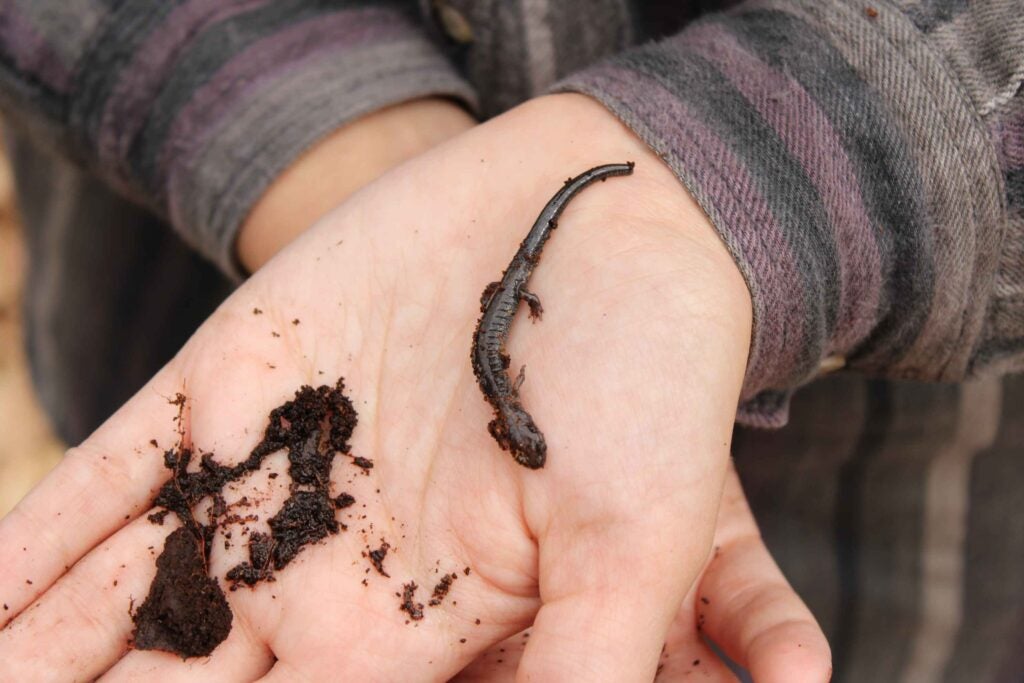
Additional data on plants and animals have been collected and recorded via iNaturalist. While the majority of observations have been from URI classes and events, local community members have also contributed. As more people learn about the North Woods, wider participation in open-source science will be possible. To learn more about how iNaturalist has been used in the North Woods, click here. You can also explore this StoryMap created by Ally Overbay, URI Master of Environmental Science and Management 2024.
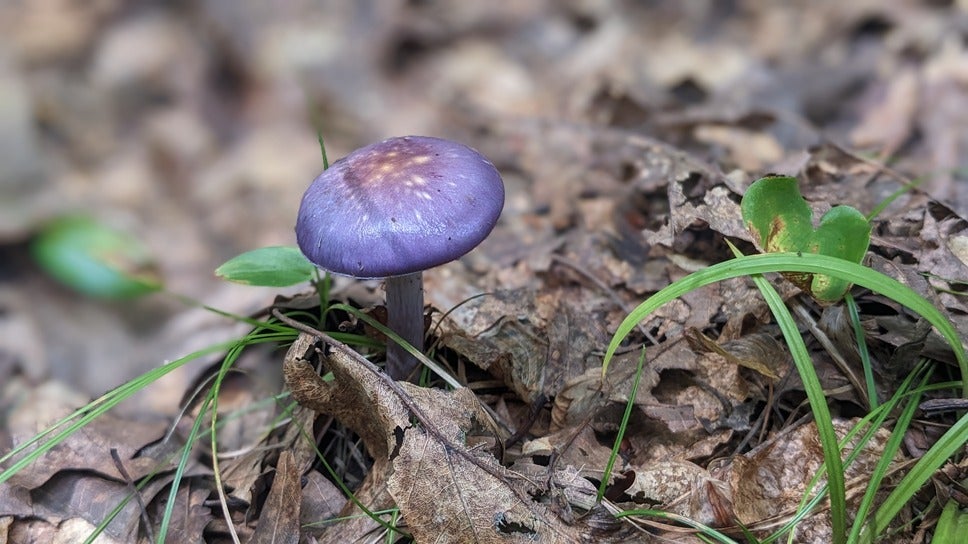
Be on the lookout for other fungi underfoot!
In Spring 2023, the first annual BioBlitz was hosted in the North Woods. A BioBlitz is a community event to identify as many species as possible at a given location. Another BioBlitz was hosted in April 2024, organized by the North Woods Hiking and Conservation Club.
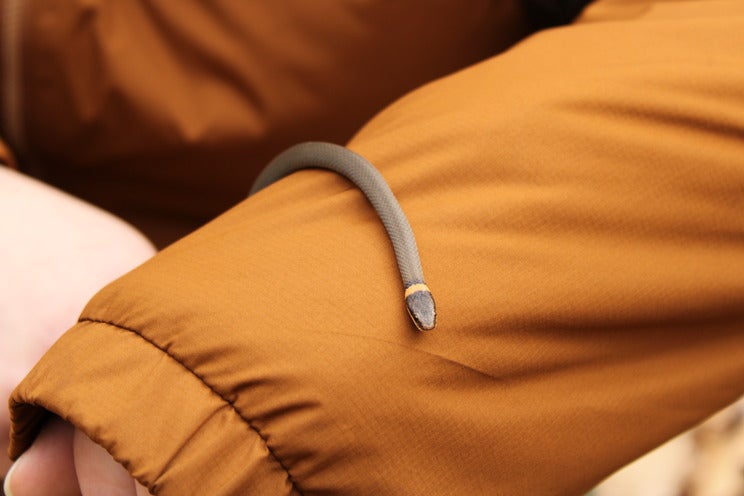
In fact, there are no venomous snakes in Rhode Island.
Habitat Highlight: Vernal Pools
Wetlands are essential to amphibian life cycles. Vernal pools are rare, temporary wetlands that provide habitat for some species of amphibians and invertebrates for parts of their life cycles. Depressions in land fill with water for 3-9 months each year, beginning in spring. For vulnerable amphibian eggs, vernal pools represent important habitat, as fish and other aquatic predators can’t survive in a wetland that dries up.
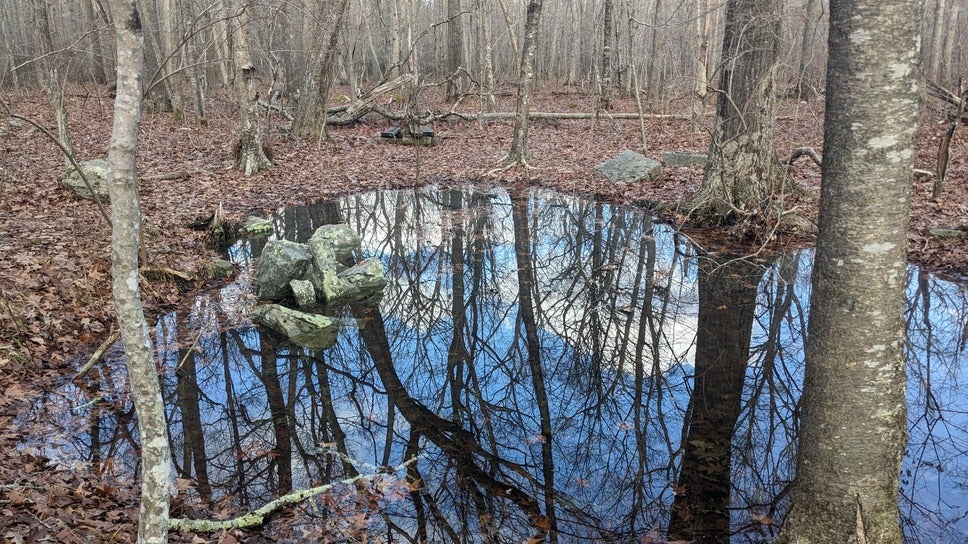
Vernal pools in the North Woods frequently serve as outdoor classrooms. Courses such as Herpetology and Wetland Ecology visit them to survey amphibian nesting sites. One vernal pool near Flagg Road is thought to be a remnant of a livestock watering hole. The site is a fascinating example of how colonial human disturbance developed into prime wildlife habitat. Granite blocks, with cleft marks from hand tools, are around and within the water. A nail that possibly dates to the 1800s was found in the pool after the water had dried up for the season. Egg masses from wood frogs, spring peepers, American toads, and spotted salamanders have been found in this vernal pool.
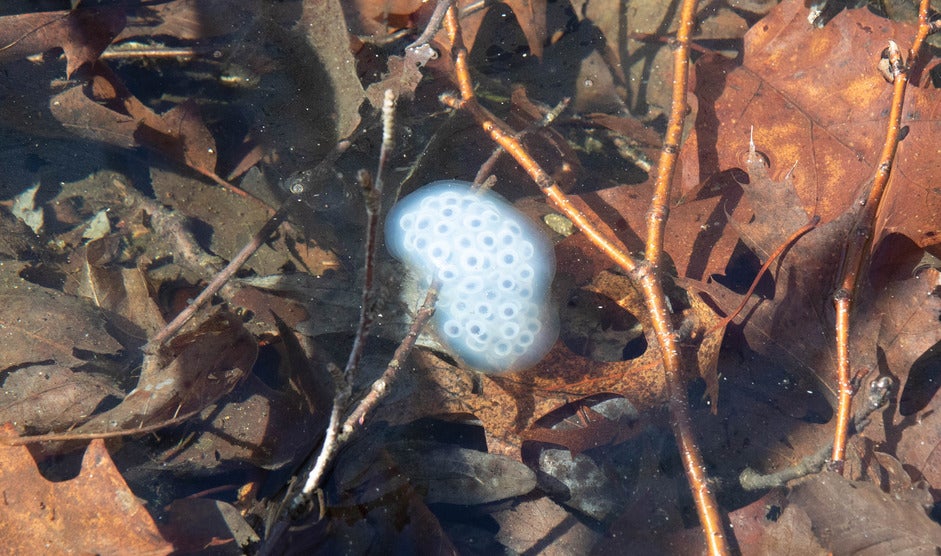
Vertebrate species that reproduce in vernal pools spend most of the year in the surrounding woodland, then migrate and breed in the seasonal wetlands. Amphibians are especially sensitive to pollutants, as they may be absorbed through their semi-porous skin. The ecosystem surrounding a vernal pool can provide a protective buffer, where trees and soil filter out harmful substances. This buffer also helps to control temperature of these delicate ecosystems and influence the flow of water through the landscape.
Humans and Nature in the North Woods
The natural history of the New England landscape is inextricably linked with human history. These habitats have been shaped by human activities over time, beginning with the Narragansett People over 30,000 years ago. Indigenous land management included controlled burns, to keep the understory open for hunting and gathering. They may have also cleared patches within the forest for agriculture. The result was a mix of habitat types that was resilient and biodiverse.
Colonial settlers cleared large tracts of land for homesteads and farms. Soil profiles of the North Woods indicate that large portions were once used as livestock pasture. Stone walls and other structures are prominent, like much of New England. Rocky soils provided plenty of building material. Stone walls were used to mark property lines, enclose livestock, and divide agrarian areas. While stone walls in New England are sometimes thought to be exclusively colonial, many were also constructed by Narragansett stonemasons, both during and after colonization. To learn more about humans and the North Woods, visit our section on Human History.
What’s in a forest?
Over 250 acres of the North Woods are forested, including 18 acres of forested wetlands. Forest of this size and age are increasingly rare in the state of Rhode Island. In 2008, URI students conducted a survey that documented the “Century Forest”. This invaluable site had been untouched by logging for over 100 years, and it survived the 1938 hurricane.
Most forests are a patchwork of different “communities”. These communities are made up of distinct groups of plant species. Forest communities in the North Woods are of mixed ages and have been shaped by varying levels of human impact over the past century.
Over 40 species of trees have been identified, along with a richly diverse understory of shrubs and herbs. The majority, 220 acres, is classified as oak forest, filled with white, black, scarlet, and northern red oak, as well as pignut and mockernut hickory. 16 acres of forested wetlands are dominated by red maple, swamp white oak, and birches.
